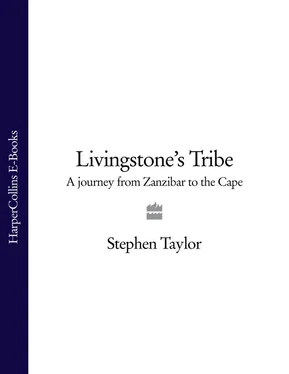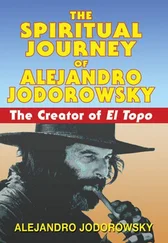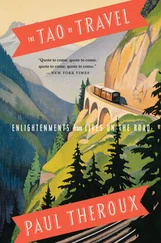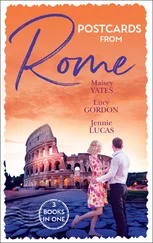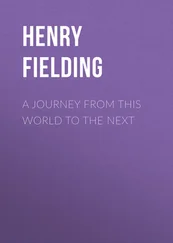‘Well it opened up so many more possibilities ,’ he said. ‘Getting involved, I mean. There were colonials who were frightened of the place. Before independence they would say to me, “Do you think we’re going to be all right?” What I always said was “Only you can answer that. I know that I am going to be all right.” Then there were others who got involved. They cared for their people – some really loved ’em. They enjoyed the country and themselves. I did the same thing, in a different way.’
Had his work achieved anything? ‘I’ve often doubted, and I still do, whether we have any business being here. All this advising and cajoling of people – who are we to say? But can we get out? No. It’s gone too far for that. And there are instances where, yes, I think we did improve things.’
I went back to paradoxes. Just as Europeans had tended to see Africa as either Elysium or an abyss, it had often brought out in our kind extremes of either idealism or cynicism. What, I wondered, did Africans make of us; I was not talking about any of those trite old clichés about colonialism. What did Africans really think about us?
In answer to this absurd question he told a story.
Germany’s colonial wars were harbingers of the Holocaust. In 1904, the Herero people rebelled in German South-West Africa, killing about a hundred colonists. The authorities’ response was to issue an order for the Hereros’ extermination. Over the next year, General Lothar von Trotha hunted down the civilian population, driving them and their livestock further and further into the eastern desert. Of 80,000 Hereros, fewer than 16,000 survived. A year later, across the continent in what is now Tanzania, the Maji Maji rising began. Its suppression was equally pitiless. About 75,000 died of wounds or starvation.
In the aftermath of these terrible little wars, statues were erected in both territories to the power of German arms and the colonial dead. The hill in Windhoek, the arid but strangely appealing little capital of South-West Africa, was dominated by the triumphalist bronze of a rampant Teutonic cavalryman. Another monument was set up in the Southern Highlands, not very far from the Ricardo ranch at Matanana.
When uhuru came, Daudi anticipated the early removal of the statue. For more than fifty years it had stood as a grotesque affront to local sensibilities. Now, surely, it would be toppled, perhaps to be melted down and refashioned as a likeness of Mkwawa, the rebel leader. Time went by without any action, however. Eventually Daudi asked a local chief, a grandson of Mkwawa.
‘Oh no,’ said the chief, ‘it is staying there. It is now our memorial, to our dead.’
A similar process, I recalled, had taken place more than twenty years later when South-West Africa became Namibia. To the astonishment of everyone, the Teutonic rider was left to flaunt his empty triumph from the hill above Windhoek.
Was that it? Was it that, even at our worst, we were recognised simply as a fact, an inescapable part of existence?
‘Africans are endlessly tolerant but those of us who stay face a challenge. We have to learn a new cultural language and that can be very painful. Then, at some point, it just happens. We wake up to find we have been absorbed.’
He laughed. ‘Anyway, the question is academic. We old mzungus are dying out. Soon we’ll all be gone.’
I was thinking of South Africa, I said.
‘Ah, yes,’ he said.
When he got up I saw again how tall and thin he was. He leaned on a stick and walked with painful slowness while Meshack fluttered anxiously around. The cancer had left Daudi unsteady on his feet and in one bad fall recently he had broken a wrist. Long and gnarled, he might have been a bit of debris, an old tree, washed up on the beach.
We made our way down to the sea, passing the deserted hotel. In the late afternoon the sun had fallen behind a hill, casting a deep shadow across the building, now crumbling and streaked with decay. ‘Used to be pretty lively round here,’ Daudi said, ‘all night parties, that sort of thing. I prefer it like this.’ A solitary fat woman sat under one of the palm-thatched beach shelters, as if waiting for the party to resume. Beyond the shadow, the sea was pure and luminous. At the edge, a waste-pipe debouched into the shallows. For that moment all the ambiguities of the figure beside me were reconciled in the paradoxes of Africa itself – the white man, patrician yet humble, enduring in a place cruel but forgiving.
Before leaving I asked if there was anything he needed. He waved the idea away. ‘I’ve got a nice library. I get the odd visitor. And Meshack lets me win at backgammon every now and again. It’s just a pity he’s hopeless at chess.’
As the car pulled away, heading back to Dar, the driver turned to me. ‘I know him,’ he said. Then he added, almost fiercely as if I might deny it: ‘He is a good man.’
St Monica’s Hostel, Zanzibar: Sunday, 9 March
I AWAKE IN AN enclave of Christendom to the muezzin’s call. My room at the old missionary hospital is appropriately bare but spacious as well, with shuttered windows opening on to a sun-blasted courtyard and a lone palm tree beside Christ Church Cathedral. The cool, smooth floor offers more by way of relief than the fan, which wobbles and creaks alarmingly overhead. Even at dawn the air feels thick and moist beneath the mosquito net.
I can remember no Anglican building which has moved me more than the cathedral. The pale pink mortar of the exterior has been blackened by tropical mould, giving to the whole vastness of the structure the gaunt magnificence of an ancient ruin. The interior, showing similar signs of decay, is full of the incongruities and misunderstandings born out of a fusion of alien cultures. The materials combine African and Mediterranean elements – local coral and mortar for the walls, and twelve marble pillars at the rear of the nave which were shipped here from Europe and so confused the local builders that they were erected upside down. The apse strives for further classical effect, raised on a marble floor and lined behind the high altar by a ring of seats carved in African style from local wood.
Beneath a slab between the altar and seats lies the cathedral’s builder and first bishop, Edward Steere. Above all, though, the place is a monument, and an apt one, to David Livingstone – big, flawed and craggily grand. As building began on Christmas Day in 1873, the missionary-explorer’s embalmed body was being borne down to the coast by his companions, Chuma and Susi, on his most famous journey of all. The arrival of this touching little cortège in Zanzibar three months later captured the British public’s imagination as no single act had during Livingstone’s lifetime. On a pillar at the entrance to the sanctuary is a symbolic relic which encapsulates the whole episode, a crucifix made from the tree at Chitambo in Zambia under which his servants buried Livingstone’s heart.
His work as a missionary had been a hopeless failure, but Livingstone’s mission in the grander sense was complete. A month before his death, the Sultan of Zanzibar had submitted to pressure and signed a decree abolishing the slave trade in his dominions. Christ Church Cathedral, named after St Augustine’s first cathedral in England, arose on the site of the old slave market. The altar was on the spot where once the whipping-post stood.
The service began with gusto, Rock of Ages sung in Swahili. The sermon that followed was barely audible. At an English parish church it tends to be the other way round – congregations singing softly, vicars talking loudly. Here the hymns are fortissimo throughout, unaccompanied but instinctively reaching for three-part harmony. Women and children sit on the left of the aisle in bright print frocks that challenge the sombre interior. Men and the older boys sit on the right. All efforts to break down this custom from the Islamic past have failed but neither side has any other inhibitions. They come and go, the well-off clattering noisily on leather-soled shoes, the humble passing soundlessly on bare feet.
Читать дальше
